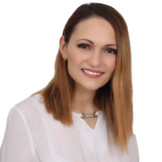How are genital warts treated? Medication, ointments or surgery?
However, any treatment can only reduce and not completely eliminate HPV infection.
So far, there is no cure to directly eliminate HPV infection. Only the visible manifestations are treated.
The only possible prevention is vaccination against the HPV virus.
Patients with genital warts and their sexual partners should be screened for sexually transmitted diseases and have a smear taken for cytological examination.
Treatment should be carried out with both partners, it is necessary to observe sexual abstinence and better hygiene.
Treatment in children is necessary for some findings. Children are monitored for a long time and if warts persist for more than 2 years, they are unlikely to disappear spontaneously.
There are solutions, ointments, in some cases, immunity-boosting drugs are administered so that the body can better fight the virus. Another treatment option is surgical removal.
Soft condylomas respond well to podophyllin, podophyllotoxin and trichloroacetic acid.
Once the skin warts have been removed, the virus continues to persist in the body and may remain hidden for several months, which over time can cause new, often thickened warts to reappear and grow.
Treatment is challenging especially because of the frequent return of warts.
The treatment takes into account the thickness, size and number of warts.
The method of treatment also depends on the patient, whether they wish to have the treatment done in the home environment, which is more intimate, which a greater number of patients are inclined to do, than having a stranger administer the drug. What is up for consideration, however, is whether the patient is able to hit all the warts and will the treatment be successful.
The treatment of warts is done in a non-surgical as well as surgical way.
Non-surgical treatment involves creams, liquids to remove the warts, or virostatics applied directly to the wart. Special care should be taken when treating young children to ensure that solutions are not taken by mouth and medications put out of their reach and access. These solutions, once swallowed, are life-threatening.
Non-surgical treatment
Application of podophyllin resin 10 to 25% when after application it is necessary to wash off the drug after 4 hours. This treatment is associated with both burning sensation and swelling.
Podophyllotoxin 0.15% is a cream that is applied to the affected area on the wart in the comfort of the home by the patient themselves. It is applied twice a day for three consecutive days, followed by a four-day break. Lower treatment efficacy has been noted in men with circumcision and in women.
Imiquimod 5% cream can also be applied to children over 12 years of age in the comfort of their own home. It is applied three times a week at night. In case of the appearance of burning, itching, the treatment can be omitted for a certain period of time.
Trichloroacetic acid is applied only to skin lesions once a week.
Surgical treatment
Cryotherapy with liquid nitrogen is a freezing treatment, it is one of the more painful treatments, with burning sensation, blistering and rarely scarring may occur. The success rate of total clearance is 62-86% in patients.
Electrodesiccation is also a painful procedure with possible scarring and recurrence of warts in one-quarter of patients. Total clearance is achieved in 57-94% of patients.
CO2 ablative laser: after laser application, the risk of warts returning within one year is 23%. However, 27-100% clearance is achieved after its application.
Pulsed dye laser is well tolerated even in children because it is rarely associated with pain and scarring, is effective and safe.
Surgical removal requires local anesthesia and is done for larger skin lesions. Complete clearance is achieved in 35-72%.
Other treatment methods
Polyphenon: active natural substances from green tea have antiviral, antioxidant activity. They are available in the form of ointment.
A 5% aqueous solution of KOH is applied with a cotton swab once a day until mild inflammation develops.
Interferon has antiviral effects.
The vitamin D3 derivative is applied topically twice daily. It is convenient and painless when applied in children.
Photodynamic therapy (PDT) is a safe and highly effective method using the effect of red light.
Local hyperthermia at a temperature of 40 - 50 ºC is applied to the affected area using a probe.
Low-dose cyclophosphamide (CY).










